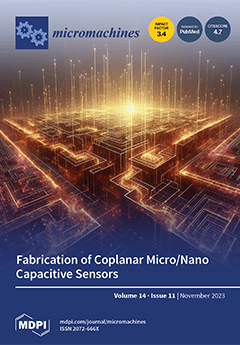Passivation is commonly used to suppress current collapse in AlGaN/GaN HEMTs. However, the conventional PECV-fabricated SiN
x passivation layer is incompatible with the latest process, like the “passivation-prior-to-ohmic” method. Research attention has therefore turned to high-temperature passivation schemes. In this paper, we systematically
[...] Read more.
Passivation is commonly used to suppress current collapse in AlGaN/GaN HEMTs. However, the conventional PECV-fabricated SiN
x passivation layer is incompatible with the latest process, like the “passivation-prior-to-ohmic” method. Research attention has therefore turned to high-temperature passivation schemes. In this paper, we systematically investigated the differences between the SiN
x/GaN interface of two high-temperature passivation schemes, MOCVD-SiN
x and LPCVD-SiN
x, and investigated their effects on the ohmic contact mechanism. By characterizing the device interface using TEM, we reveal that during the process of MOCVD-SiN
x, etching damage and Si diffuses into the semiconductor to form a leakage path and reduce the breakdown voltage of the AlGaN/GaN HEMTs. Moreover, N enrichment at the edge of the ohmic region of the LPCVD-SiN
x device indicates that the device is more favorable for TiN formation, thus reducing the ohmic contact resistance, which is beneficial to improving the PAE of the device. Through the CW load-pull test with drain voltage
VDS = 20V, LPCVD-SiN
x devices obtain a high PAE of 66.35%, which is about 6% higher than MOCVD-SiN
x devices. This excellent result indicates that the prospect of LPCVD-SiN
x passivation devices used in 5G small terminals will be attractive.
Full article






